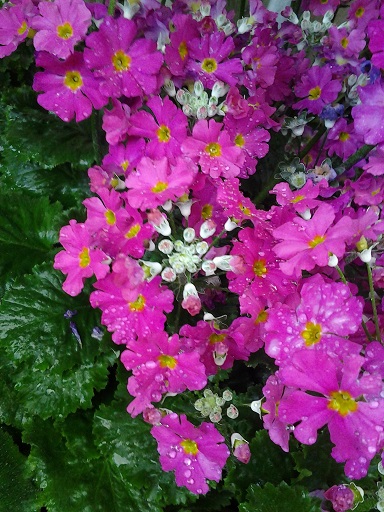UNITED STATES—Cyclamen are everywhere! Some nurseries have more cyclamen than all other cool season annuals combined. Not all cyclamen are represented though. Almost all are white or simple red. Pink, salmon and other shades of red are noticeable scarce because they are not traditional colors of Christmas. The plants are mostly of impeccable quality, and outfitted with abundant flowers. While there is not much else blooming, the popularity of cyclamen is impossible to ignore.
The problem with cyclamen is the expense. Relative to other cool season annuals, they are large plants that are only available in four inch and larger pots, so naturally cost more. They can not be purchased in less expensive cell packs. Even though they are perennials that can last for many years, they are almost always used as disposable cool season annuals that get replaced when warm season annuals come into season. It can be difficult to justify such an expense for something that lasts only a few months.
The advantage to cyclamen is that they look good instantly, even if they do not perform as reliably during the next few months. This is something that the other cool season annuals have difficulty with. Only larger and more expensive annuals in four inch pots are so immediately colorful, and even they need some time to fluff out and get established in the garden. They just do not grow as fast now as they did earlier in autumn. The weather is now cooler. The days are now shorter.
This is why it was important to replace warm season annuals with cool season annuals earlier instead of later, even if some of the warm season annuals had still been blooming somewhat well. It gave the cool season annuals some time to mature before winter really slowed everything down. Even though they do not grow as actively now, they are already big enough to bloom impressively.
Pansy, viola, stock, Iceland poppy, nemesia, various primroses and ornamental cabbage and kale can certainly get planted now, but will grow a bit slower than they would have if they had been planted earlier in autumn. If necessary, it might be worth planting them a bit more densely than typical or planting larger plants from four inch pots.
Highlight: fairy primrose
The simple pink and white of ‘Good & Plenty’ candy is what fairy primrose, Primula malacoides, is known for. Pastel purple is also popular. Rosy reddish pink and deeper pinkish purple are somewhat rare. The small flowers are arranged in circular trusses that stand as tall as one foot, just above the softly mounding light green foliage. The rounded leaves are slightly fuzzy. All parts of fairy primrose are toxic, and to those who happen to be allergic to it, can be as severely irritating to the skin as poison oak!
Because they take quite a while to mature and bloom if grown from seed, fairy primrose are typically purchased as cool season bedding plants that are already blooming. Bloom continues through winter and into early spring. If not replaced by warm season annuals, some of the healthier plants can survive through summer to bloom again the following winter as short term perennials. When they do not get enough water from rain, they want to be watered regularly. Fairy primrose can tolerate significant shade.






